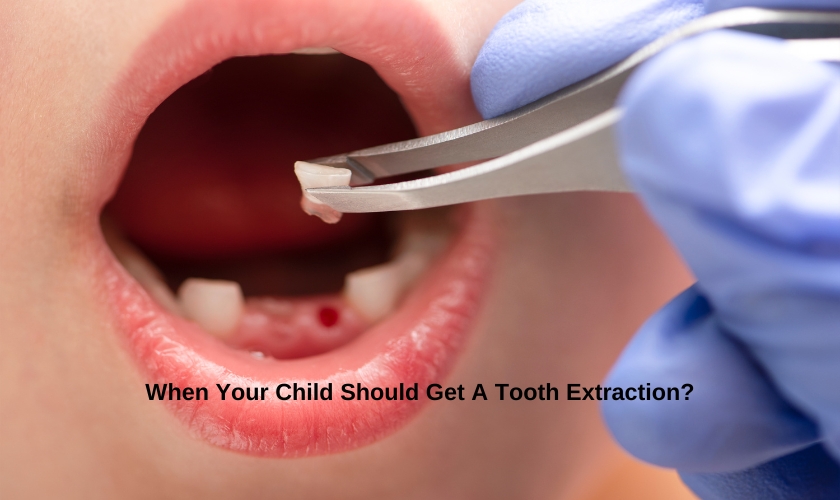

Seeing your child’s tooth wobble can be exciting, but what if it gets a little too loose? Relax! Tooth extraction is rare for children, but there are times when a dentist might recommend it. Let’s explore when extraction might be necessary for a healthy smile.
The Importance of Oral Health in Children
Maintaining optimal oral health is crucial for children as they grow and develop. In some cases, tooth extraction may be necessary to address various dental issues and ensure the overall well-being of a child’s oral cavity. This article delves into the signs and symptoms that may indicate the need for tooth extraction in children, common reasons for this procedure, what to expect during the extraction process, aftercare and recovery tips, potential risks, alternative options, and ultimately, how parents can promote the best oral health for their child. Let’s explore the important considerations surrounding tooth extraction in children and how parents can navigate this aspect of their child’s dental care.
Signs and Symptoms that May Indicate the Need for Tooth Extraction
Time to play detective! Keep an eye out for these red flags that could signal it’s time for a tooth extraction for your kiddo.
1. Persistent Tooth Pain
If your child is experiencing persistent tooth pain that just won’t quit, it could be a sign that a tooth extraction is in order. Nobody likes a nagging toothache, so it’s best to address it sooner rather than later.
2. Dental Trauma or Injury
Accidents happen, especially in the bustling world of childhood. If your child experiences dental trauma or injury, a tooth extraction may be necessary to ensure their oral health is back on track.
3. Crowded or Misaligned Teeth
Sometimes, our kiddo’s chompers just don’t want to play nice with each other. Crowded or misaligned teeth can cause issues that may require tooth extraction to create space and promote proper alignment.
Common Reasons for Tooth Extraction in Children
Let’s break it down – here are some of the most common reasons why a tooth extraction might be necessary for your little one.
1. Severe Tooth Decay
When tooth decay goes unchecked, it can wreak havoc on your child’s oral health. In cases of severe decay, a tooth extraction may be needed to prevent further complications.
2. Impacted Wisdom Teeth
Ah, wisdom teeth are the gift that keeps on giving. When those pesky wisdom teeth become impacted or cause issues, tooth extraction may be recommended to keep things in check.
3. Orthodontic Treatment Needs
Braces and other orthodontic treatments can work wonders for your child’s smile, but sometimes a tooth extraction is necessary to create space or facilitate proper alignment during the treatment process.
The Procedure: What to Expect During a Child’s Tooth Extraction
Now that you know why a tooth extraction might be necessary, let’s walk through what you can expect during the actual procedure.
1. Preparing for the Extraction Appointment
Before the big day, your dental team will walk you through everything you need to know to prepare your child for their tooth extraction. Knowledge is power!
2. Anesthesia Options for Children
Don’t worry, we’ve got options! Your child’s comfort is a top priority, so your dentist will discuss anesthesia options to ensure a smooth and pain-free extraction experience.
3. Step-by-Step Overview of the Extraction Process
From start to finish, your dental team will guide you through each step of the extraction process, so you know exactly what’s happening and can rest easy knowing your child is in good hands.
And there you have it, folks! A crash course in when your child might need a tooth extraction and what to expect along the way. Remember, maintaining good oral health habits and keeping up with regular dental check-ups can help prevent the need for tooth extractions in the future. Keep on smiling.
Aftercare and Recovery Tips for Children Following a Tooth Extraction
1. Managing Discomfort and Swelling
After a tooth extraction, it’s normal for your child to experience some discomfort and swelling. Over-the-counter pain medication can help manage the pain, and applying a cold compress to the cheek can reduce swelling. Encourage your child to rest and avoid strenuous activities.
2. Eating and Drinking Guidelines After Extraction
For the first few days after a tooth extraction, stick to soft foods like yogurt, mashed potatoes, and smoothies. Avoid hot, spicy, or crunchy foods that can irritate the extraction site. Encourage your child to drink plenty of water to stay hydrated.
3. Caring for the Extraction Site
To promote healing, remind your child not to rinse their mouth vigorously or use a straw in the days following the extraction. Encourage gentle brushing around the extraction site and remind them to follow the dentist’s instructions for any prescribed mouthwash or medicated gels.
Potential Complications and Risks of Tooth Extraction in Children
1. Infection and Post-Extraction Pain
Watch out for signs of infection, such as increased pain, swelling, or pus around the extraction site. If your child experiences severe or worsening pain after the extraction, contact your dentist immediately.
2. Bleeding Issues
While some bleeding after a tooth extraction is normal, excessive bleeding that doesn’t stop with gentle pressure could indicate a problem. If bleeding persists, seek prompt dental care to avoid complications.
3. Dry Socket and Healing Problems
Dry socket, a painful condition where the blood clot at the extraction site becomes dislodged, can delay healing. Ensure your child follows aftercare instructions carefully to reduce the risk of dry socket and other healing complications.
Alternatives to Tooth Extraction for Children
1. Dental Fillings or Crowns
In cases where decay or damage is minimal, dental fillings or crowns may be viable alternatives to extraction. These treatments can restore the tooth’s structure and function without the need for removal.
2. Orthodontic Solutions for Alignment Issues
For alignment issues like overcrowding or misaligned teeth, orthodontic treatments such as braces or clear aligners can help correct the problem without resorting to extraction.
3. Monitoring and Preventive Care Plans
Regular dental check-ups and preventive care, such as dental sealants and fluoride treatments, can help prevent the need for extractions by maintaining your child’s oral health and addressing issues early on.
Overall, understanding the aftercare, potential risks, and alternatives to tooth extraction for children can help you make informed decisions about your child’s oral health. By following recommended guidelines, staying vigilant for complications, and exploring alternative treatments, you can ensure your child maintains healthy teeth and a bright smile for years to come. Remember, a little extra care now can lead to a lifetime of healthy smiles!
Conclusion: Ensuring the Best Oral Health for Your Child
Consult With a Pediatric Dentist Today!
Open communication with your child’s dentist and adherence to recommended oral hygiene practices are key to maintain their dental health. Consult your child’s dentist if you have any concerns about their loose teeth or suspect a problem. Early diagnosis and treatment can help prevent complications and ensure your child’s oral health thrives. Stay proactive, stay informed, and prioritize your child’s oral health for a bright and healthy smile that lasts a lifetime.
FAQ
1. At what age do children typically need tooth extractions?
A. Tooth extractions in children are uncommon and typically only necessary in specific situations. Usually, baby teeth fall out naturally between the ages of 6 and 12 years old to make way for permanent teeth. Wisdom teeth extractions, however, may be needed in late teens or early adulthood.
2. Is tooth extraction painful for children?
A. Pediatric dentists prioritize making tooth extractions comfortable for children. Local anesthesia is typically used to numb the area, and sometimes nitrous oxide (“laughing gas”) can help with anxiety. There may be some mild discomfort after the procedure, but pain medication can help manage it.
3. Can baby teeth be extracted, and is it necessary?
A. Yes, baby teeth can be extracted if necessary. Common reasons for extraction include:
- Severe decay or infection that can’t be treated
- Impacted baby teeth that are blocking permanent teeth from erupting
- Loose teeth that are causing pain or discomfort
- Injuries that damage the tooth or surrounding bone
4. Are there any long-term effects of tooth extraction on a child’s oral health?
A. Early tooth extraction can potentially affect the development of the jaw and surrounding teeth. However, a pediatric dentist will weigh the risks and benefits before recommending an extraction. If a baby tooth needs to be extracted, they will likely recommend a space maintainer to keep the space open for the permanent tooth to erupt properly.






